Wagons … south
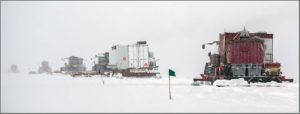 The South Pole overland Traverse, or SPoT, left McMurdo Station (WAP USA-22) on Antarctica’s Ross Island on Nov. 12, to begin a trek of more 1,000 miles across the Antarctic Plateau to NSF’s Amundsen-Scott South Pole Station (WAP USA-36).
The South Pole overland Traverse, or SPoT, left McMurdo Station (WAP USA-22) on Antarctica’s Ross Island on Nov. 12, to begin a trek of more 1,000 miles across the Antarctic Plateau to NSF’s Amundsen-Scott South Pole Station (WAP USA-36). 
Image:TNX Mike Lucibella at NSF
In the first of three such traverses planned for this research season, the eight tractors and a tracked vehicle called a PistenBully will haul 100,000 gallons of fuel to the station.
TNX National Science Foundation-Office Polar Programs, USA
Law Dome Drilling Camp, WAP AUS-NEW
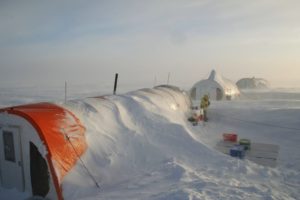 Law Dome was roughly mapped by the United States Feological Survey from aerial photographs taken by U.S. Navy (Operation Highjump) in the year 1946–47, and has been the subject of intensive glaciological and geophysical surveys by Australia National Antarctic Research Expedition between 1962 and 1965. It was named by the “Antarctic Names Committee of Australia” for Phillip Law, Director of the Australian Antarctic Division from 1949 to 1966.
Law Dome was roughly mapped by the United States Feological Survey from aerial photographs taken by U.S. Navy (Operation Highjump) in the year 1946–47, and has been the subject of intensive glaciological and geophysical surveys by Australia National Antarctic Research Expedition between 1962 and 1965. It was named by the “Antarctic Names Committee of Australia” for Phillip Law, Director of the Australian Antarctic Division from 1949 to 1966.
Law Dome is a small ice sheet attached to the edge of the main East Antarctic ice sheet with an independent ice flow. The bedrock of Law Dome is an underground island separated from the bedrock of East Antarctica by a deep trench. 
In this area, there is a large drilling Camp subjected of intensive glaciological and geophysical surveys undertaken by Australia since 1962, when the presence and nature of Law Dome was revealed.
Location of Law Dome, East Antarctica, consists in two separate drilling sites: the AWS at 66°44′ South, 112°45′ East, and DSS at 66°46′ South, 112°48′ East.
Read more at: http://www.antarctica.gov.au/about-antarctica/history/stations/casey/what-is-s2
If and when some of the researchers, working down there will show up on the air, transmitting on the HF bands, a proper WAP reference will be given.
The 64th Russian Antarctic Expedition
Russia has provided a full details of its 64th RAE and we are happy to share it on the WAP pages , sure that the Antarctic chasers will enjoy to know the plan; in addition, being us Radioamateurs, we are sure we will have good chance to work the skilled Radio operators in the several Russian Bases while they will be there.
TNX and credit: State Scientific Center-Arctic and Antarctic Research Institute of the Russian Federation
 The scientific expedition ship Akademik Fedorov has just departed from St. Petersburg to the shores of the Antarctic. This will be the 43rd expeditionary flight of the flagship of the Russian polar fleet. The ship’s captain is Oleg Kalmykov Kalmykov, the head of the seasonal expedition is Mikhail Viktorovich Bugayov.
The scientific expedition ship Akademik Fedorov has just departed from St. Petersburg to the shores of the Antarctic. This will be the 43rd expeditionary flight of the flagship of the Russian polar fleet. The ship’s captain is Oleg Kalmykov Kalmykov, the head of the seasonal expedition is Mikhail Viktorovich Bugayov.
On board the ship, 100 participants of the 64th RAE will go to Antarctica: 61 people from the wintering staff of Mirny (WAP RUS-Ø7), Vostok (WAP RUS-13) and Progress stations (WAP RUS-11), 39 participants of seasonal work at these stations, as well as seasonal field bases Molodezhnaya (WAP RUS-Ø8) and Oasis Banger and the R/V “Akademik Fedorov”.
To ensure the year-round operation of the Antarctic stations and the implementation of scientific programs of the seasonal expedition, more than 1,200 tons of various cargoes were loaded on board, including 852 tons of diesel fuel, 67 tons of food, consumables, spare parts, scientific instruments and equipment.
The voyage will last 207 days and will consist of two Antarctic phases, each of which will begin in the port of Cape Town.
At the first stage, the vessel will ensure the start of seasonal work at the Molodezhnaya Base, at Progress and Mirny stations. Then “Akademik Fedorov” will deliver personnel and supplies for Vostok station, ensure the implementation of geological and geophysical works in the Oasis of Banger and oceanographic works in the waters of the Mawson Sea and Prydz Bay. Along the way, the ship will deliver personnel and cargoes to the seasonal base of the Belarusian and cargo to the Belgian seasonal base Princess Elizabeth on the coast of the Riiser-Larsen Sea.
The first stage will be completed in mid-March in the port of Cape Town, where participants of the wintering team at Novolazarevskaya and Bellingshausen stations will arrive on scheduled flights.
The second stage of the Antarctic cruise of the vessel will take place along the route: Cape Town – Molodezhnaya (WAP  RUS-Ø8), Novolazarevskaya (WAP RUS-Ø9), Bellingsgausen (WAP RUS-Ø1), Montevideo – Bremerhaven – St. Petersburg. At this stage, the vessel will supply and replace the wintering team at Novolazarevskaya and Bellingshausen stations, as well as complete seasonal operations at these stations and seasonal bases Molodezhnaya and Vechernyaya Mountain (WAP BLR-NEW). At the exit from the Antarctic, the vessel will conduct marine research in the Bransfield and Drake Straits. The return of the “Akademik Fedorov” to the home port is planned for June 2, 2019.
RUS-Ø8), Novolazarevskaya (WAP RUS-Ø9), Bellingsgausen (WAP RUS-Ø1), Montevideo – Bremerhaven – St. Petersburg. At this stage, the vessel will supply and replace the wintering team at Novolazarevskaya and Bellingshausen stations, as well as complete seasonal operations at these stations and seasonal bases Molodezhnaya and Vechernyaya Mountain (WAP BLR-NEW). At the exit from the Antarctic, the vessel will conduct marine research in the Bransfield and Drake Straits. The return of the “Akademik Fedorov” to the home port is planned for June 2, 2019.
In total, the staff of the 64th RAE will include 120 employees of the seasonal expedition, 110 people of the wintering expedition, two ships: the R/V “Akademik Fedorov” (Pic above) and the R/V “Akademik Alexander Karpinsky” (Pic aside), two helicopters of the type KA-32 and the An-2 aircraft.
WAP wish the polar explorers good luck in the expedition!
Nov. 6th, Chilean Antarctica Day
In 1965, President Eduardo Frei Montalva, declared November 6, as Chilean Antarctic Day; since then, every year Chile through INACH, celebrate it.
The “Instituto Antártico Chileno” (Chilean Antarctic Institute/INACH) is a technical organization of the Chilean Ministry of Foreign Affairs, with complete autonomy in scientific, technical and outreach Antarctic activities.
 Pic aside show the Chilean Navy Base , Arturo Prat (WAP CHL-Ø1).
Pic aside show the Chilean Navy Base , Arturo Prat (WAP CHL-Ø1).
Chile is developping logistical and scientific cooperation with 17 countries, including the United States, United Kingdom, China, Argentina, Brazil, Korea, Colombia, Italy, Uruguay and Spain. In addition, INACH bases and three shelters will be used, the laboratories of two bases operated by the Armed Forces; three Navy ships; airplanes and helicopters.
Happy “Día de la Antártica Chilena” celebration to the Chilean friends, scientists and researcher.
A New Antarctic Award: WABA-FT8
I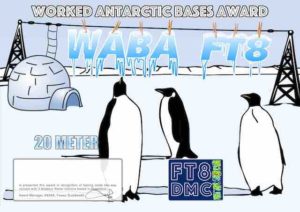 n recognition of international two-way FT8 amateur radio communication, the FT8 Digital Mode Club (FT8-DMC) issues Worked Antarctic Bases Award certificates to amateur radio stations worldwide. Qualification for the FT8 WABA award is based on an examination by the FT8 WABA Award Manager, from QSOs that the applicant has made with minimum 3 different amateur radio stations from Antarctica . All contacts must be made from the same country. Band endorsements for 6, 10, 12, 15, 17, 20, 30, 40, 80 and 160m available.
n recognition of international two-way FT8 amateur radio communication, the FT8 Digital Mode Club (FT8-DMC) issues Worked Antarctic Bases Award certificates to amateur radio stations worldwide. Qualification for the FT8 WABA award is based on an examination by the FT8 WABA Award Manager, from QSOs that the applicant has made with minimum 3 different amateur radio stations from Antarctica . All contacts must be made from the same country. Band endorsements for 6, 10, 12, 15, 17, 20, 30, 40, 80 and 160m available.
Award Manager is Fawaz Sulaibeekh A92AA (pic below),
Ref: https://www.ft8dmc.eu/media/5aead2d90fad8.pdf
This brand new WABA-FT8 will be add to the Worldwide Antarctic Awards page at:
http://www.waponline.it/worldwide-antarctic-awards/ 
The FT8 Digital Mode Club (FT8-DMC) was founded 12.July 2017 by Jo Engelbrecht, OE4VIE and Hannes Grünsteidl, OE1SGU (OE3SGU) after recognizing a need for a club for FT8 users who would help newcomers and less-experienced operators to learn and improve about this fantastic mode.
Everyone with a love of FT8 is welcome to join our club. All FT8DMC members are eligible to participate in various Club’s activities and award programs.
More at: https://www.ft8dmc.eu/about
RI1ANM actually operating at Vostok Station
Thanks Alexei Kuz’menko RN1ON who did inform WAP about RI1ANM:
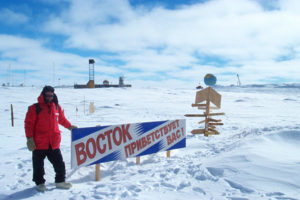 Alexander, RX0QM, ex.RI59ANT & RI1ANB (2017) is actually operating from Vostok Station (WAP RUS-13), in Antarctica. He is not very active but, being there till January 2019, there are good chances to work him.
Alexander, RX0QM, ex.RI59ANT & RI1ANB (2017) is actually operating from Vostok Station (WAP RUS-13), in Antarctica. He is not very active but, being there till January 2019, there are good chances to work him.
QSL, if no variations from the previous activities, should go through EW4DX
TNX Alexei, RN1ON
Founded by the Soviet Union on Dec. 16, 1957, the station lies at 78°27’50” South, 106°50’15” East at an altitude of 11,444 feet, about 800 miles East of the South Pole and to this day,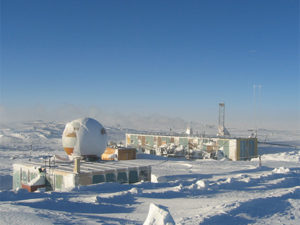 it remains one of Russia’s major base stations, with people living there year-round.
it remains one of Russia’s major base stations, with people living there year-round.
Vostok Station (WAP RUS-13) is a Russian research outpost; it is one of the most inaccessible and inhospitable places on Earth. Some 25 scientists live there in the summer, where temperatures get up to a relatively pleasant minus 25 degrees F.
Only 13 or so remain there through the long winter, when the mercury plunges to minus 85 degrees F. (We mean that metaphorically, because mercury actually freezes solid at around 40 below zero.) The lowest reliably-measured, naturally-occurring temperature on the Earth’s surface happened on July 21, 1983; there, temperatures dropped to minus 89.2 °C (−128.6 °F; 184.0 K).
Daniele Karlicek and his time in Antarctica
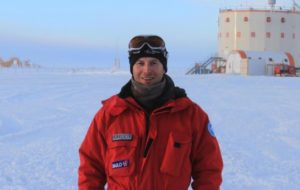 Daniele Karlicek (pic aside), of the Department of Mathematics and Geosciences at the University of Trieste (Italy), did winter over a couple of times at the Italian-French Base “Concordia-Dome C” (WAP MNB-Ø3) in Antarctica, involved in a paleoclimatic research campaign as part of the research activities carried out at the Isotopic Geochemistry Laboratory of the University of Trieste.
Daniele Karlicek (pic aside), of the Department of Mathematics and Geosciences at the University of Trieste (Italy), did winter over a couple of times at the Italian-French Base “Concordia-Dome C” (WAP MNB-Ø3) in Antarctica, involved in a paleoclimatic research campaign as part of the research activities carried out at the Isotopic Geochemistry Laboratory of the University of Trieste.
While he was working on the Antarctic Plateau, Daniele Karlicek left a comment about WAP proposal of buiding a chapel at the Italian Base MZS in Antarctica. –Beautiful initiative, the one of building a Church in Antarctica!- he wrote, and add: –I did it myself, by reproducing with ice, the Dome Church of my town (Muggia, in the Province of Trieste) at Base Concordia “Dome C” during my overwintering stay- .
 Now Daniele has informed WAP that, time ago, an Australian Organization which has probably seen the “ice Church” published somewhere, did ask him to set a video on this matter.
Now Daniele has informed WAP that, time ago, an Australian Organization which has probably seen the “ice Church” published somewhere, did ask him to set a video on this matter.
We are glad to share it through, up here at WAP website
Thanks Daniele, you did great… it was a nice way to say a prayer,
Lord will be certainly grateful of your job!
Ham Radio and the “power” of Antarctica
This is a story of Luciano IK2QPO (aka OE3ZLL and II2ANT); it tells how the Antarctic passion can even involve the Mayor of a city!
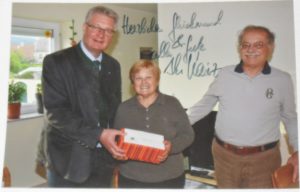 I am Luciano IK2QPO (also OE3ZLL) and I live part in Milan, in the northern of Italy, and part in Pfaffstätten, a small town near Vienna, the capital city of Austria. Since I am interested in the Antarctic, every year in February I participate to the Antarctic Week as II2ANT WAP-Ø3Ø.
I am Luciano IK2QPO (also OE3ZLL) and I live part in Milan, in the northern of Italy, and part in Pfaffstätten, a small town near Vienna, the capital city of Austria. Since I am interested in the Antarctic, every year in February I participate to the Antarctic Week as II2ANT WAP-Ø3Ø.
After many years, I succeeded in receiving the WADA and WACA awards, which I have hanged in my shack in Austria. One year ago, as it is custom in small towns in Austria, the Mayor of Pfaffstätten visited us to congratulate my wife for her 70th birthday (see pic aside). In my dining room there was a bottle of champagne and in the corner of my shack, the Antarctic awards hung on the wall. The mayor admired both, the champagne and my awards as well.
He asked me: “Are you an active radio amateur? Because if you have done many contacts with the Antarctic, you must be a very good radio amateur.”
“Yes, I am an experienced radio amateur” , I replied
He told to me: “I am Disaster Manager for Lower Austria and we would need radio amateurs for emergency communication. Would you like to become responsible for emergency communication in my town?”
“Yes, of course”, I answered “But not with this dipole (a dipole for 20 and 40m). For the WADA and WACA award I have used a better one. In Italy, I have a Yagi antenna and a longer dipole.”
He replied to me: “Well, then send me a request for the authorisation to install a good antenna which is also suitable for emergency communication and I will promptly authorize it. Since your amateur radio station is a station for emergency communication nobody can forbid it and your neighboors have to accept it because emergecy is a prority for everyone”
So now I have a 40 ft. high tower with a 6 element Yagi and 3 long wires for low band and emergency use.
TNX WADA and WACA … they really did help.
I hope to copy someone from Austria soon! 73 and good DX by OE3ZLL a.k.a IK2QPO & II2ANT
… and we congratulate Herr Christoph Kainz, the Mayor of the city of Pfaffstätten for his foresight; yes, Radio join the people and surely helps in emergency communications!
RI5ØANO, a new QSL from Bellingshausen Station
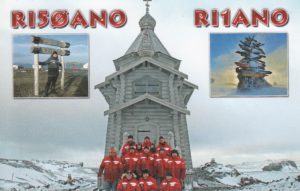 Bellingshausen Station (WAP RUS-Ø1) is a Russian (formerly Soviet) Antarctic Station at Collins Harbour, on King George Island of the South Shetland Islands.
Bellingshausen Station (WAP RUS-Ø1) is a Russian (formerly Soviet) Antarctic Station at Collins Harbour, on King George Island of the South Shetland Islands.
It was one of the first research stations founded by the Soviet Antarctic Expedition in 1968.
It is also the location of Trinity Church, the only permanently staffed Eastern Orthodox Church in Antarctica.
Callsigns RI5ØANO & RI1ANO were both operated Jan & Febr. 2018 by Alex Ushakov UA1OJL at Russian Antarctic Research Station “Bellingshausen” is located at 62°12′ South, 58°58′ West (CQ 13, ITU 73, IOTA AN-010, AA: UA-04, WAP RUS-Ø1)
TNX QSL Manager Alexei Kuz’menko RN1ON
Auckland teenagers set to kayak around Antarctic Peninsula
Paddling kayaks around icebergs isn’t your typical school trip, but two Auckland teenagers, led by the explorer Olympic kayaker Mike Dawsonm are about to do just that. They’ll be joined by five other students and will head off in March 2019.
The expedition is the latest organized by the Antarctic Heritage Trust
They’re heading to Antarctica with an Olympian as a guide, following in the footsteps of some of history’s legendary polar explorers – Sir Edmund Hillary, Robert Falcon Scott and Ernest Shackleton.
What it’s like to camp in Antarctica?
Four simple lessons you can learn from Antarctica about sustainability. “You’re going to have icebergs, you’re going to have amazing scenery – whales, seals, penguins – you name it, it’s going to be there.” Mike said.
Read more at:
https://www.newshub.co.nz/home/new-zealand/2018/10/auckland-teenagers-set-to-kayak-around-antarctic-peninsula.html
Enjoy a short video of Kayaking in Antarctica
IAØ/IZ1KHY on the way to Antarctica
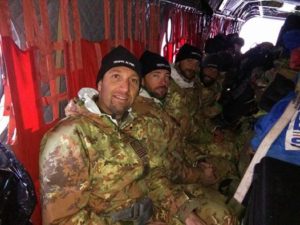 Danilo Collino IZ1KHY (pic aside) will be involved in Antarctica till the end of February 2019, following several scientific missions and research projects, including remote camps.
Danilo Collino IZ1KHY (pic aside) will be involved in Antarctica till the end of February 2019, following several scientific missions and research projects, including remote camps.
Lt. Danilo Collino is an expert Mountain Scout of the Italian Army and this is his second mission in Antarctica where he was wintering over in the year 2004 operating as IØQHM/KC4 from Mario Zucchelli St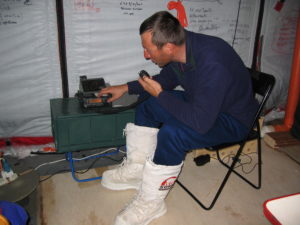 ation (WAP ITA-Ø1).
ation (WAP ITA-Ø1).
This season, Danilo will stay for a week (maybe more) in few remote camps and in each of the following Bases:
MZS-Mario Zucchelli Station (WAP ITA/Ø1)
Scott Base (WAP NZL-Ø1)
McMurdo Station (WAP USA-22)
Jang Bogo Station (WAP KOR-Ø2)
Concordia Station (WAP MNB-Ø3) (pic above Lt. Danilo Collino IZ1KHY operating from Sitry Camp – Antarctica)
Of course, he will need permission to operate Ham radio frequencies from the foreign Bases, by using the Station’s equipment (Antennas & RTX); let’s hope he 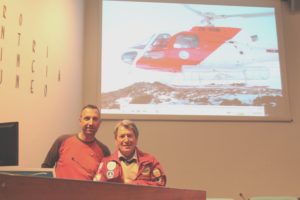 will succeed and in this case the call could be IAØ/IZ1KHY from the Italians sites and eventually KC4/IZ1KHY, ZL5/IZ1KHY, HL8/IZ1KHY. At Concordia Station he will also use IAØ/IZ1KHY. On remote camps he will try to set some dipoles and be active SSB only (power 50-100W) as KC4/IZ1KHY/P.
will succeed and in this case the call could be IAØ/IZ1KHY from the Italians sites and eventually KC4/IZ1KHY, ZL5/IZ1KHY, HL8/IZ1KHY. At Concordia Station he will also use IAØ/IZ1KHY. On remote camps he will try to set some dipoles and be active SSB only (power 50-100W) as KC4/IZ1KHY/P.
More information to follow in due course.
TNX Lt. Danilo Collino IZ1KHY
Pic aside: Left to Right- IZ1KHY Danilo & I1HYW Gianni
October 21: Day of the Argentine Amateur Radio
 On October 21, 1921, a qualified group of radio amateurs ( the first on the air) met, in an assembly held in the auditorium of the newspaper “La Prensa”, did found the Radio Club Argentino, which historically became the third Radio Club in the world ,
On October 21, 1921, a qualified group of radio amateurs ( the first on the air) met, in an assembly held in the auditorium of the newspaper “La Prensa”, did found the Radio Club Argentino, which historically became the third Radio Club in the world ,
Thus, the so called “Antarctics” keep gratitude and recognition to the Radio Amateurs, because they were a nexus with their loved ones, approaching them with affection in the distance and time.
At the beginning of the century, the Navy’s Ministry did regulate the Ham radio spectrum and was the one who granted the first Amateur Radio License to Teodoro Belloq, on October 15, 1913, who did set a radiotelegraphy station on Av. Callao to 1600 of the Federal Capital and another in a fifth in the San Isidro Party, Province of Buenos Aires.
The Radio Amateurs were a small group and known for doing weird things, something like the alchemists of 1900!
Read more at: http://www.marambio.aq/radioaficionado.html
Happy Amateur Radio Day’s celebration to all of the operator actually active from the Antarctc Bases in the Icy Continent as well as all of those involved in Ham radio communications.
Particular wishes to our friends living in Tierra del Fuego (WAP ARG-23)
Antarctica NZ scientists due to fly South after weather causes two-week delay
Flights to Antarctica delayed by a fortnight due to storms are set to take off.
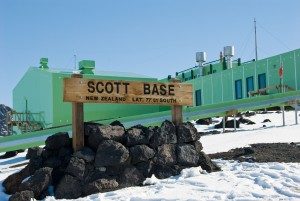 Antarctica New Zealand staff were scheduled to fly south on October 1 to set up Scott Base (WAP NZL-ØØ1) for the summer science season ahead, but wild winds and snow closed the McMurdo Sound airfields, causing the longest delay in decades to the start of the season.
Antarctica New Zealand staff were scheduled to fly south on October 1 to set up Scott Base (WAP NZL-ØØ1) for the summer science season ahead, but wild winds and snow closed the McMurdo Sound airfields, causing the longest delay in decades to the start of the season.
The first flight is scheduled to fly out at 8am Tuesday, followed by another at 11am. There will be two more flights on Wednesday, one on Thursday and two on Friday.
An Antarctica New Zealand spokeswoman said the first to fly south include mechanics, electricians, chefs, domestic staff, communications operators and logistics personnel. They will prepare Scott Base for the season, with scientists due to start flying south later this month.
She said US staff in Antarctica have been busy clearing Phoenix Airfield (WAP USA-NEW), which serves US research centre McMurdo Station (WAP USA-22) and New Zealand’s Scott Base (WAP NZL-Ø1), following the storms.
Antarctica New Zealand general manager of operations Simon Trotter said the New Zealand team was working hard to minimise impact on science planned for the beginning of the season.
“The storms have also affected our US neighbours, who are due to fly south to McMurdo Station. Unlike us, they can’t send their employees home to wait it out – so many of them are getting to know Christchurch very well.”
Read more at:
https://www.stuff.co.nz/environment/107846223/antarctica-nz-scientists-due-to-fly-south-after-weather-causes-twoweek-delay
Busy season for NIWA scientists in Antarctica
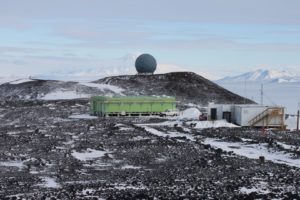 The new science season at Antarctica is just a few days away from opening and NIWA researchers are busy packing containers and shipping them to the ice where they will be reunited with them in the coming months.
The new science season at Antarctica is just a few days away from opening and NIWA researchers are busy packing containers and shipping them to the ice where they will be reunited with them in the coming months.

The summer science season lasts for about five months, and 10 NIWA staff will be heading south over that time, with the first due there in early October to work at Arrival Heights, NIWA’s atmospheric research station (WAP NZL-NEW) about six kilometers from Scott Base (WAP NZL-Ø1), Latitude 77° 49′ Ø1″ South , Longitude 166° 25′ ØØ” East Elevation 184 m asl
Principal atmospheric technician Dan Smale will be carrying out specialized annual maintenance and calibration on the equipment which makes important measurements of greenhouse gases and trace gases such as ozone.
Mr Smale will also train two new technicians to run and maintain the instruments. One will be based on the ice for summer, while the other will remain for a full year. Later in the season atmospheric technicians Gordon Brailsford and Mike Kotkamp will also go to Arrival Heights for further maintenance and replacement of specialized parts.
Read more at:
http://www.scoop.co.nz/stories/SC1809/S00038/busy-season-for-niwa-scientists-in-antarctica.htm
Antarctica & its cosmic radiations
Antarctica is emitting cosmic radiation?
In 2006, NASA launched a probe on Antarctica to measure the cosmic radiation that falls on our planet. The probe soon began to detect these particles, but there was something very rare in a percentage of them: they came from below, from the ice of Antarctica.
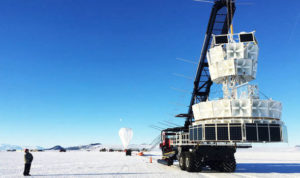 Last week, a team of physicists from the Pennsylvania State University did publish an interesting theory about the origin of that cosmic radiation that seems to be originated in our own planet. If that theory proves to be true, what emits the ice of Antarctica is a new type of particle that goes completely out of the current standard model of physics and would demonstrate the validity of the supersymmetry model.
Last week, a team of physicists from the Pennsylvania State University did publish an interesting theory about the origin of that cosmic radiation that seems to be originated in our own planet. If that theory proves to be true, what emits the ice of Antarctica is a new type of particle that goes completely out of the current standard model of physics and would demonstrate the validity of the supersymmetry model.
The pic aside (Photo and credit to: NASA), show the ANITA Probe. Cosmic rays were observed shooting from Antarctica by the high-tech ANITA balloon
Sources:
https://es.gizmodo.com/la-antartida-esta-emitiendo-radiacion-cosmica-y-eso-po-1829437531
Rothera Research Station, WAP GBR-12
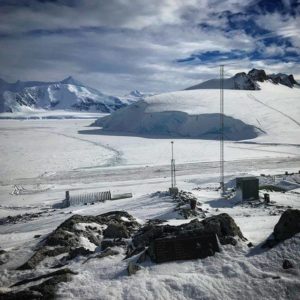 Rothera Station (WAP GBR-12) 67° 34’ Ø3” South, 68° Ø7’ 47” East, is the BAS logistics centre for theAntarctic and home to well-equipped biological laboratories and facilities for a wide range of research. The station is situated on a rock and raised beach promontory at the southern extremity of Wormald Ice Piedmont, South-Eastern Adelaide Island.
Rothera Station (WAP GBR-12) 67° 34’ Ø3” South, 68° Ø7’ 47” East, is the BAS logistics centre for theAntarctic and home to well-equipped biological laboratories and facilities for a wide range of research. The station is situated on a rock and raised beach promontory at the southern extremity of Wormald Ice Piedmont, South-Eastern Adelaide Island.
Rothera Station was established in 1975 to replace Adelaide station (1961-1977) where the skiway had deteriorated.
October 2018: The Runway at Rothera Station (Lat: 67° 34’ 3” South, Lon: 68° 7’ 39” East) has finally been cleared of snow in readiness for the first aircraft of the season. The view west towards the mountains of Adelaide Island, and Ryder Bay covered with sea ice.
Photo: Jess Walkup
The link below, will lead the readers through the Airfields in Antarctica:
https://www.aeroinside.com/airports/antarctica/antarctica/AQ
DT8A is QRV from King Sejong Base (WAP KOR-Ø1)
Lee Sang Hoon (DS4NMJ) is actually active from the Korean Antarctic scientific station King Sejong (WAP KOR-Ø1) on the South Shetland Islands, signing DT8A.
 Lee operates barefoot, just 100 Watts but he has just started to be on air all bands CW and SSB; he will stay at King Sejong Base until the end of December.
Lee operates barefoot, just 100 Watts but he has just started to be on air all bands CW and SSB; he will stay at King Sejong Base until the end of December.
QSL manager is HL2FDW
TNX DT8A
Established on February 17, 1988, King Sejong Base consists of 11 facility buildings and two observatories, and it is located on the Barton Peninsula, King George Island. It experiences a fairly mild climate, and therefore draws a large number of animals for summer breeding (which, unsurprisingly, draw a lot of biologists).
In the summer, the station supports up to 90 people from the Korean Polar Research Institute, and guest scientists from other institutions as well. Over winter, it accommodates only 17 engineers and scientists who maintain the station and routinely collect data (meteorological records, oceanographical parameters, etc.), but their main focus is on tracking the general change of the natural environment.
The video above shows the Blizzard on King Sejong Station of Antarctica
Trying to eat “spaghetti al fresco” in Antarctica
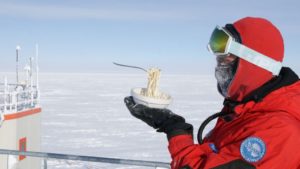 Eating outside can be one of life’s great joys, but it’s a whole different story when you live in Antarctica.The scientists working at Concordia Station (aka Dome C-WAP MNB-Ø3), one of the most remote places on Earth at around 1,000 miles from the Geographical South Pole, rarely get that pleasure with temperatures dipping as low as -80°C in winter.
Eating outside can be one of life’s great joys, but it’s a whole different story when you live in Antarctica.The scientists working at Concordia Station (aka Dome C-WAP MNB-Ø3), one of the most remote places on Earth at around 1,000 miles from the Geographical South Pole, rarely get that pleasure with temperatures dipping as low as -80°C in winter.
But with spring coming on in the region and the temperature rising close to a positively balmy -60°C, station leader Dr Cyprien Verseux and his colleagues decided a spot of al fresco dining was in order.
Concordia, which is currently home to 13 people, is extremely isolated with no other human beings within around 370 miles.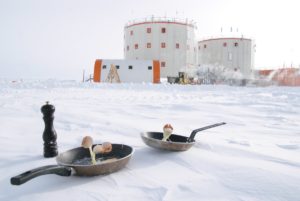
It is an inhospitable place beyond even the cold temperatures, it is an incredibly dry area and the sun did not peak over the horizon for three months over the winter until it made a reappearance in August.
Dr Verseux explained: “Concordia is highly attractive to researchers from different fields such as astronomy, human physiology, glaciology, atmospheric sciences, and geophysics.”
It is used by the European Space Agency to study how humans adapt to what are likely very similar conditions to a future moon or Mars base.
Read more at:
http://home.bt.com/news/science-news/this-is-what-happens-if-you-eat-spaghetti-al-fresco-in-antarctica-11364299753880
A new polar research ship for Britain
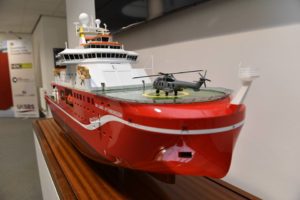 Construction is progressing on the RRS Sir David Attenborough one of the most advanced polar research vessels in the world. From 2019 onwards scientists researching oceans, ice and atmosphere will have access to state-of-the-art facilities on this floating multidisciplinary research platform.
Construction is progressing on the RRS Sir David Attenborough one of the most advanced polar research vessels in the world. From 2019 onwards scientists researching oceans, ice and atmosphere will have access to state-of-the-art facilities on this floating multidisciplinary research platform.
The new polar ship is commissioned by NERC, built by Cammell Laird to a Rolls-Royce design and operated by British Antarctic Survey. This new research platform will transform how ship-borne science is conducted in the Polar Regions. The commissioning of the RRS Sir David Attenborough is part of a major Government polar infrastructure investment programme designed to keep Britain at the forefront of world-leading research in Antarctica and the Arctic.
This £200m commitment represents the UK Government‘s largest investment in polar science since the 1980s.
Read more at: https://www.bas.ac.uk/polar-operations/sites-and-facilities/facility/rrs-sir-david-attenborough/
TNX and credit: British Antarctic Survey
Mario Zucchelli Station, WAP ITA-Ø1, 34th Antarctic Campaign
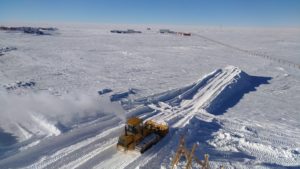 The XXXIV Italian Antarctic Campaign (2018-2019) has just begun few days ago. Mario Zucchelli Station (WAP ITA-Ø1) has been open and personnel is working on the outside to rebuild the air strip, waiting for the first airplane and then, the start of the summer campaign. The helicopters make a stop on one of the 3 equipped platforms, the light aircraft equipped with skis land on any flat snow-covered surface, the Hercules C-130 instead (with wheels) on a 3000 meter long seasonal track that is set on sea ice.
The XXXIV Italian Antarctic Campaign (2018-2019) has just begun few days ago. Mario Zucchelli Station (WAP ITA-Ø1) has been open and personnel is working on the outside to rebuild the air strip, waiting for the first airplane and then, the start of the summer campaign. The helicopters make a stop on one of the 3 equipped platforms, the light aircraft equipped with skis land on any flat snow-covered surface, the Hercules C-130 instead (with wheels) on a 3000 meter long seasonal track that is set on sea ice.
The site of the Italian Base, initially called Stazione Baia Terra Nova and now Mario Zucchelli (MZS), is located along the coast of Northern 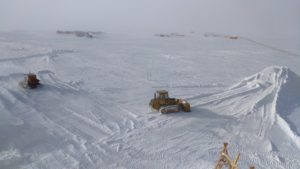 Terra Vittoria, between Campbell and Drygalski glaciers. The coordinates of the station are: latitude 74° 41′ 42″ South, longitude 164° 07′ 23″ East.
Terra Vittoria, between Campbell and Drygalski glaciers. The coordinates of the station are: latitude 74° 41′ 42″ South, longitude 164° 07′ 23″ East.
It is built on a small rocky peninsula. The area where the buildings and facilities are located has access to the sea.
Small inlets lend themselves to the loading/unloading of materials according to the season. At the beginning of the summer season, when the surrounding sea is covered by ice, the ship unloads the materials on the ice pack and then, by means of convoys of sleds everything is moved to the base. At the end of the summer, when the ice gives way to water, a small pier and a barge are used for connections between land and ship.
So far, we don’t know if, among the personnel involved in this 34th Antarctic Campaign, there is some Radio operators who can work HF on the Ham radio bands.
South Georgia Island and its Stations
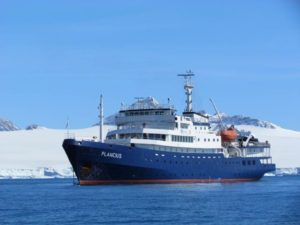 Some clips and photographs of a trip to South Georgia Island, Sub-Antarctic areas, in January, 2014 with the Oceanside Expeditions ship Plancius
Some clips and photographs of a trip to South Georgia Island, Sub-Antarctic areas, in January, 2014 with the Oceanside Expeditions ship Plancius
(Click on the gif aside to see a 29′ videoclip)

Stops at Elsehul Bay, Rosita Harbour (WAP GBR-NEW), Stromness Whaling Station (WAP GBR-NEW), Grytviken (WAP GBR-29), Fortuna Bay, Jason Harbour, Gold Harbour and Cooper Bay.
Thanks and credit to: Jack Salen
Retracing Antarctica’s glacial past
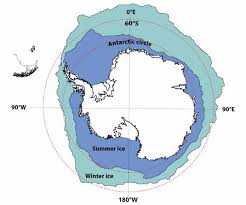 More than 26,000 years ago, sea level was much lower than it is today partly because the ice sheets that jut out from the continent of Antarctica were enormous and covered by grounded ice — ice that was fully attached to the seafloor. The ice sheets were as large as they could get and at the time, sea level was much lower because a lot of ice was sequestered on the continent. As the planet warmed, the ice sheets melted and contracted, and sea level began to rise.
More than 26,000 years ago, sea level was much lower than it is today partly because the ice sheets that jut out from the continent of Antarctica were enormous and covered by grounded ice — ice that was fully attached to the seafloor. The ice sheets were as large as they could get and at the time, sea level was much lower because a lot of ice was sequestered on the continent. As the planet warmed, the ice sheets melted and contracted, and sea level began to rise.
LSU Department of Geology & Geophysics Associate Professor Phil Bart and his students have discovered new information that illuminates how and when this global phenomenon occurred. Their research recently published in Nature’s Scientific Reports may change today’s sea level rise predictions as Earth and its icy continent continues to warm…
Read more at: https://www.eurekalert.org/pub_releases/2018-09/lsu-rag092518.php
Casey Station-Antarctica, WAP AUS-Ø2
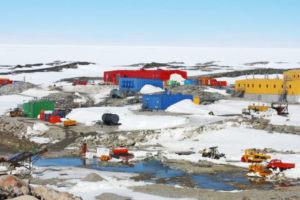 Casey Station (WAP AUS-Ø2) is significant as a transport hub for the Australian Antarctic Program, with the introduction of intercontinental jet flights for scientists and operational staff from Hobart to the Wilkins Ice Runway (WAP AUS-NEW), 65 kilometres (40 mi) inland from Cas
Casey Station (WAP AUS-Ø2) is significant as a transport hub for the Australian Antarctic Program, with the introduction of intercontinental jet flights for scientists and operational staff from Hobart to the Wilkins Ice Runway (WAP AUS-NEW), 65 kilometres (40 mi) inland from Cas ey Station. The inaugural landing of the AAD‘s Airbus A319 aircraft was on the evening of December 9th, 2007.
ey Station. The inaugural landing of the AAD‘s Airbus A319 aircraft was on the evening of December 9th, 2007.
A video of Wilkins runway is available by clicking on the gif aside:
In addition, there is an appendix of the main Casey Base (WAP AUS-Ø2); that is Casey Station Skyway, just a smaller airstrip for aircraft such as Twin Otters and the Baslers. It is located at 66° 17’ 17” South, 110° 45’ 27” East, 10 kilometers (6.2 mi) to the East of Casey Base, and opened on 30 December 2004.
Collecting envelopes from Antarctica
If you don’t know anyone residing or working in those remote corners of the world you can still receive covers from them. Here’s how I do it:
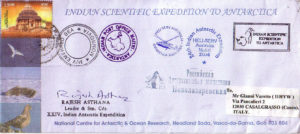 Put your cover and the request letter in a larger envelope and mail it to the base or administrative organization.
Put your cover and the request letter in a larger envelope and mail it to the base or administrative organization.
Expect your mail to take a long time to come back to you. Some covers could take well over a year to come back, and sometimes, they don’t come back at all. Be patient. It helps to know the shipping schedules so you can get your covers to the bases with plenty of time for them to be back on a boat (or plane) and back to you. If your covers arrive on the last boat of the season they might sit until next season for a return trip.
 Remember that these bases are in the Southern Hemisphere: summer in the North when it’s winter in the South. During their winter months, access to most of these bases is nearly impossible so in most cases, mail will only be delivered during their summer.
Remember that these bases are in the Southern Hemisphere: summer in the North when it’s winter in the South. During their winter months, access to most of these bases is nearly impossible so in most cases, mail will only be delivered during their summer.
Sometimes it is possible to buy some old and interesting stamped envelopes on the internet market but for sure, those addressed directly to you, as collector, have for yourself a better value.
Learn more at:
http://stamps.mybalconyjungle.com/antarctic_covers/antarctic_covers.html
15th WAP Meeting (Worldwide Antarctic Program)- Mondovì, Italy
WAP Meeting nr. 15th ; another great goal for the Antarctic Hams and followers!
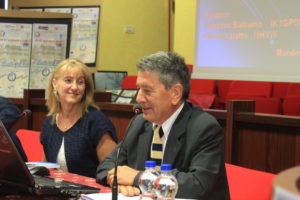 Organized by ARI Mondovì since its launching on 2003, WAP Meeting continue with no interruptions. WAPwebsite (thanks in particular to Floyd KK3Q) is giving the visitors (Hams, chasers, students) a chance to know more about the Icy Continet and the HF communication with people involved down there in scientific missions.
Organized by ARI Mondovì since its launching on 2003, WAP Meeting continue with no interruptions. WAPwebsite (thanks in particular to Floyd KK3Q) is giving the visitors (Hams, chasers, students) a chance to know more about the Icy Continet and the HF communication with people involved down there in scientific missions.
39 years of continuous work is a real great commitment .. perhaps some younger Hams can come on to give us the change!
This year, theme of the Meeting, was “ Antarctic passion and WAP Directory” ; just one click to enter almost every corner of the Antarctic, a great job provided by WAP website, but also a regret to consider that the new computerized digital systems of communication are partly supplanting SSB & CW that was a most customary habit for more than 70 years and now, slowing down years after years! Ham Radio seems to have ceased, with the exceptions of Russia, Japan, USA, Australia, Germany end few other Cuntries that are almost still active every Antarctic Summer Season.
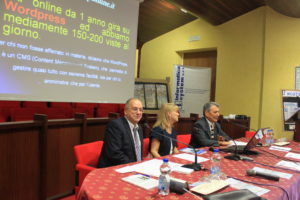 In the future it will be probably hard to record new calls and new sites by Hams operating from Antarctica, simply because other communication systems are supplanting HF contacts between amateur radio operators, rather than propagation studies and Radio experiments,
In the future it will be probably hard to record new calls and new sites by Hams operating from Antarctica, simply because other communication systems are supplanting HF contacts between amateur radio operators, rather than propagation studies and Radio experiments,
Presentation has been done by I1HYW with the help of Betty IK1QFM and Max IK1GPG (see pic aside) in front of an audience of about hundred people, between authorities and Hams coming from different parts of Italy and few European Countries.
WAIS Divide, Antarctic field camps WAP USA-34
Many Antarctic Research Stations, support satellite field camps which are, in general, seasonal camps. The type of field camp  can vary; some are permanent structures used during the annual Antarctic summer, whereas others are little more than tents used to support short term activities. Field camps are used for many things, from logistics (Sky Blu, WAP GBR-NEW) to dedicated scientific research such as WAIS Divide Field Camp, WAP USA-34 located at 79° 28′ 03″ South, 112° 05′ 11″ West.
can vary; some are permanent structures used during the annual Antarctic summer, whereas others are little more than tents used to support short term activities. Field camps are used for many things, from logistics (Sky Blu, WAP GBR-NEW) to dedicated scientific research such as WAIS Divide Field Camp, WAP USA-34 located at 79° 28′ 03″ South, 112° 05′ 11″ West.
WAIS DIVIDE is the ice flow divide on the West Antarctic Ice Sheet (WAIS) which is a linear boundary that separates the region where the ice flows to the Ross Sea, from the region where the ice flows to the Weddel Sea. It is similar to a continental hydrographic divide.
The site preparation for this Field Camp, started in the 2005/2006 season with the construction of the skiway, and a steel arch shelter for drilling and core processing. Camp logistics was provided by Raytheon Polar Service Company and the air transport by the New York Air national Guard using LC-130 aircraft.
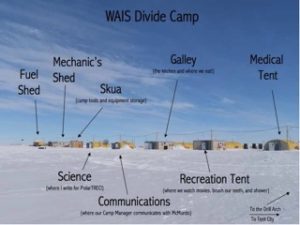 The deep coring started in the 2006/2007 season using the Deep Ice Sheet Coring (DISC) drill developed and operated by the Ice Drilling Design and Operations group at the University of Wisconsin, Madison. The coring was stopped in December 2011 at a depth of 3,405 m, which is ~ 50 m above the bottom of the ice sheet. The last 50 m of ice was left in place to provide a barrier between the borehole and the pristine aqueous basal environment. The ice at the bottom of the hole fell as snow 67,748 years ago. In the 2012-2013 season additional core was collected in zones of high scientific interest.
The deep coring started in the 2006/2007 season using the Deep Ice Sheet Coring (DISC) drill developed and operated by the Ice Drilling Design and Operations group at the University of Wisconsin, Madison. The coring was stopped in December 2011 at a depth of 3,405 m, which is ~ 50 m above the bottom of the ice sheet. The last 50 m of ice was left in place to provide a barrier between the borehole and the pristine aqueous basal environment. The ice at the bottom of the hole fell as snow 67,748 years ago. In the 2012-2013 season additional core was collected in zones of high scientific interest.
The only Ham radio activity so far, from this location was made by Steve Polishinski WB9YSD who did sign KC4/WB9YSD. There is a very interesting web page http://www.wb9ysd.org/ where Steve explains the operation and the job at WAIS (West Antarctic Ice Sheet) field camp. After his operation on January 2010, WAP did issue a new reference number as WAP USA-34.
So far QSLs have not been issued and the Antarctic chasers are still waiting.
We take the opportunity to send Steve a prayer … the saying goes, “the final courtesy of a QSO is the QSL card”.
Borchgrevink Huts (WAP NZL-NEW), New Entry on WAP-WADA Directory
Carsten Borchgrevink was a Anglo-Norwegian explorer, best known for being one of the first explorers of Antarctica; he 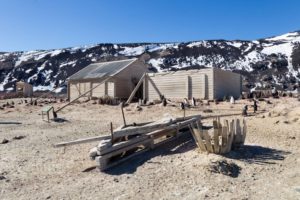 began his exploring career in 1894 by joining a Norwegian whaling expedition, during which he became one of the first persons to set foot on the Antarctic mainland. The first buildings erected by Carsten Borchgrevink at Cape Adare were prefabricated of pine by the Norwegian factory Strømmen Trævarefabrikk. These huts are still standing, and the site is recognized internationally as a significant historic site.
began his exploring career in 1894 by joining a Norwegian whaling expedition, during which he became one of the first persons to set foot on the Antarctic mainland. The first buildings erected by Carsten Borchgrevink at Cape Adare were prefabricated of pine by the Norwegian factory Strømmen Trævarefabrikk. These huts are still standing, and the site is recognized internationally as a significant historic site.
Members of the Northern Party of Scott TerraNova Expedition overwintered at Cape Adare in 1911 and 1912. They erected one hut, which has fallen into ruin today.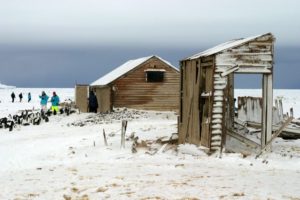
The remains of Borchgrevink’s two huts, as well as those of the Terra Nova Expedition’s hut, have also been designated a Historic Site or Monument (HSM 22), following a proposal by New Zealand and the United Kingdom to the Antarctic Treaty Consultative Meeting. The grave of Nicolai Hanson has been similarly but separately designated (HSM 23).
Expedition’s accommodation hut remains at Cape Adare, under the care of the New Zealand Antarctic Heritage Trust which acts as guardian to this hut and to those of Scott and Shackleton elsewhere on the continent. 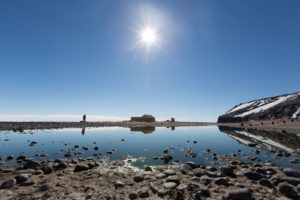 The Borchgrevink hut was designated by the Trust as Antarctic Specially Protected Area (ASPA) No. 159 in 2002. In June 2005 the Trust (the highest level of protection available under the terms of the Treaty), adopted a management plan for its future maintenance and accessibility.
The Borchgrevink hut was designated by the Trust as Antarctic Specially Protected Area (ASPA) No. 159 in 2002. In June 2005 the Trust (the highest level of protection available under the terms of the Treaty), adopted a management plan for its future maintenance and accessibility.
At the light of this evidence, Borchgrevink Huts (ASPA No.159 – HSM 22) located at Cape Adare, Victoria Land, East Antarctica, 71° 18’ 04” South, 170° 12’ 05” East, will be add to the WAP-WADA Directory, under NZL-NEW
Plan to tow icebergs from Antarctica to parched Dubai
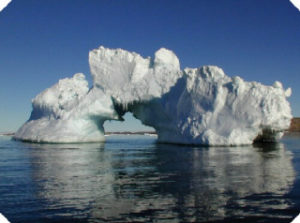 What do you do if you’re a fast-growing city in the desert with lots of thirsty people and little freshwater reserves? Park an iceberg off the coast.
What do you do if you’re a fast-growing city in the desert with lots of thirsty people and little freshwater reserves? Park an iceberg off the coast.
That’s one Dubai-based engineering firm’s plan to provide fresh drinking water to the city’s rapidly-expanding population.
The National Advisor Bureau (NABL), a private engineering firm, wants to schlep a glacial iceberg from Antarctica – weighing approximately 100 million tons – to Dubai, via an intermediate stop in either Perth, Australia, or Cape Town, South Africa.
If the iceberg doesn’t melt along the way, the firm will sell the water to Dubai’s government.
If we succeed with this project, it could solve one of the world’s biggest problems – Abdulla Alshehi, NABL’s founder told NBC News- So if we can show this is viable, it could ultimately help not only the UAE, but all humanity.
Reed more and watch a video at:
The monster Antarctic iceberg A-68 looks finally to be on the move.
For 13 months after breaking away from the White Continent’s long peninsula, the trillion-tonne block did little more than shuffle back and forth on the spot.
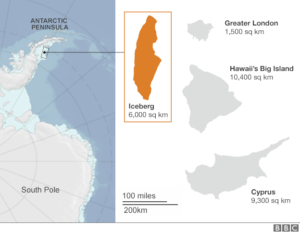 But now its southern end has swung round almost 90 degrees, indicating the berg has been caught in ocean currents.
But now its southern end has swung round almost 90 degrees, indicating the berg has been caught in ocean currents.
The approaching southern summer should only assist its anticipated slow drift northwards, experts say.
“After more than a year of moving to and from near its parent ice shelf, iceberg A-68, which calved from the Larsen C Ice Shelf on 12 july 2017, has finally escaped,” commented Prof. Adrian Luckman from Swamsea University, UK.
Until recently, the iceberg was hemmed in by dense sea-ice in the east and shallow waters in the north. Now, a strong foehn wind blowing eastwards off the ice shelf in early September has pushed the southerly end of the iceberg out into the Weddell Gyre. This persistent clockwise drift of ocean waters and floating sea-ice flowing north past the Larsen Ice Shelf has rotated A-68 out into the Weddell Sea.
“Here, it is much more free to begin moving away and be carried further north into warmer waters.”
Germany’s Alfred Wegener Institute will lead one of the scientific cruises, using the Research Vessel Polarstern; the UK’s Scott Polar Research Institute will lead the other, run off the icebreaker SA Agulhas II.
Read more at: https://www.bbc.com/news/science-environment-45421315
Base Belgrano II (WAP ARG-Ø6)-Capilla Nuestra Señora de las Nieves
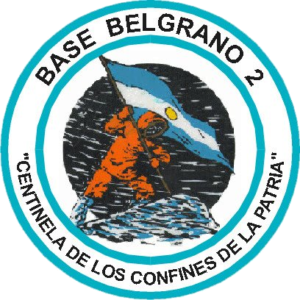 In the Argentinean Base Belgrano II (WAP ARG-Ø6), in the Land of Coats, there is a cave carved in the ice. It is the most southern place of religious worship on the planet, only 800 miles from the South Pole. The Catholic Chapel of “Our Lady of the Snows” serves the base throughout the year. Unlike the other temples that appear in this entrance, the Chapel of Our Lady of the Snows is dug in the ice instead of being a building to use.
In the Argentinean Base Belgrano II (WAP ARG-Ø6), in the Land of Coats, there is a cave carved in the ice. It is the most southern place of religious worship on the planet, only 800 miles from the South Pole. The Catholic Chapel of “Our Lady of the Snows” serves the base throughout the year. Unlike the other temples that appear in this entrance, the Chapel of Our Lady of the Snows is dug in the ice instead of being a building to use.
The chapel is accessed through a system of tunnels in the subsoil, built to facilitate the movement of the resident personnel and scientists that works at Belgrano II Research Station (WAP ARG-Ø6).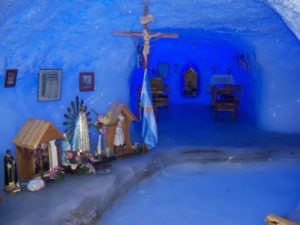
Pedro Sarli LU1JHF, sent a link where (in spanish language) you can read the history of Base Belgrano I since the fist inauguration on 18 January 1955 and see lots of pics of this fantastic ice carved chapel. After an activity of 25 years, the old base General Belgrano (WAP ARG-Ø5) was inactivated. In order to continue the scientific programs and maintain the Argentine presence in the area, on February 5, 1979, the Belgrano II Base was founded as a replacement.
Click on the link below and enjoy the history:
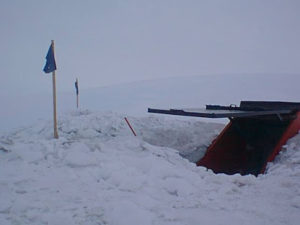
Pic here above shows the inside view of the ice carved Chapel; belows its the entrance!
TNX LU1JHF
As our readers know, WAP is collecting information and pictures to document what important is, for the people in Antarctica, to have a place to pray Lord, an holy place to free one’s spirit and thank Lord for his magnificence.
In the year 2003, WAP did propose to the italian authorities build a little Church at the Italian Base “Mario Zucchelli Station” at Terra Nova Bay… our proposal is still alive waiting the wall of bureaucracy to fall down!
ZL5A Scott Base (WAP NZL-Ø1) Antarctica
Adam Campbell ZL4ASC says he will operate for 13 months at Scott Base (WAP NZL-Ø1) signing ZL5A. His schedule is to be at Scott Base on Ross Island, over the 2018-2019 Antarctic season. More info to follow.

Adam said: Please note I will be working on critical communications equipment and can only operate as an amateur in my spare time.
Adam has a website at: https://www.adamcampbell.co.nz/
In a recent mail, Adam wrote: Hi Gianni, I am hoping to contact a large number of stations whilst on the ice, yourself included.
I am very busy collecting equipment and training for my deployment, and once I have left NZ I will be able to focus more on my ham radio stuff. Thanks for your interest and I look forward to speaking with you soon.
TNX ZL4ASC/ZL5A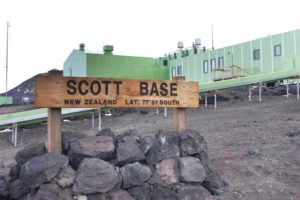
Just to remind the readers that New Zealand holds 3 WAP reference numbers in Antarctica for as many bases as listed on the WAP Directory:
WAP NZL-Ø1 Scott Base
WAP NZL-Ø2 Swan base
WAP NZL-Ø3 Worldpack Base (Greenpeace Station), plus about 21 New sites (WAP NZL-NEW) Field camps, Huts, Stations and Refuges.
On Ross Island, there is another brand New one (picture below): The Arrival Heights Laboratory (WAP NZL-NEW) which houses equipment for atmospheric  experiments, low frequency radar and aurora studies for universities and other research groups.
experiments, low frequency radar and aurora studies for universities and other research groups.
Let’s hope Adam might have a chance to go up there and give the Antarctic hunters the chance to log this “New one” … let’s keep our finger crossed, let’s hope!!!
Historical still standing Huts from the Antarctic Heroic Age 1897-1922
The first overwintering hut was erected in Antarctica at Cape Adare in 1899 by the British Antarctic Expedition led by Carsten Borchgrevink.
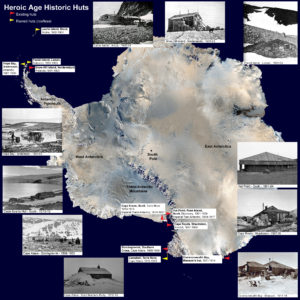
It was a large wooden structure supplied as a kit for speed and ease of erection, it was the first time a building had been erected on Antarctica, perhaps surprisingly it still stands and so is the only remaining example of a surviving first building on any continent.
It set the pattern for Antarctic buildings for the next fifty years or so of wooden huts designed to be erected quickly during a short summer season that will at some time be interrupted by adverse weather conditions.
While the buildings were only needed for 2-3 years at most, they had to be very strong and sturdily placed to withstand the relentless onslaught of the elements.
Along with cold temperatures in Antarctica resulting in a slow rate of decomposition of the wood the huts were built from, this means that there are a number of huts that are still in existence today in pretty good condition, considering their age.
Shortly we’ll report about some new Huts not yet listed on WAP-WADA Directory; they will enter on WADA next release
TNX and credit to: www.coolantarctica.com
Read more about Huts in Antarctica at: https://www.coolantarctica.com/Travel/antarctica-huts-historic.php
VKØHZ – Davis Station (WAP AUS-Ø3), Antarctica
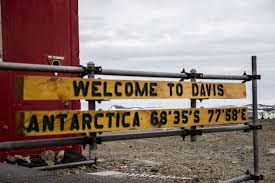 Matthew Gledhill, VK5HZ from a page set at QRZ,com informs that during the Antarctic summer 2018-2019 and Antarctic winter 2019 he will be working at Davis Station (WAP AUS-Ø3) signing VKØHZ.
Matthew Gledhill, VK5HZ from a page set at QRZ,com informs that during the Antarctic summer 2018-2019 and Antarctic winter 2019 he will be working at Davis Station (WAP AUS-Ø3) signing VKØHZ.
Matt will be there 12 months and now says: – Note this is not a DXpedition and any radio activity will be in my downtime. More details of my operation and station setup to come late 2018-.
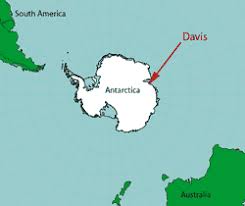 Davis Base is the most southerly Australian Antarctic Station and is situated 2250 nautical miles South-South-West of Perth, on the coast of the ice-free Vestfold Hills, Ingrid Christensen Coast of Princess Elizabeth Land, East Antarctica, in the Australian Antarctic Territory at 68° 34′ 36″ South, 77° 58′ 03″ East, Grid MC81xk
Davis Base is the most southerly Australian Antarctic Station and is situated 2250 nautical miles South-South-West of Perth, on the coast of the ice-free Vestfold Hills, Ingrid Christensen Coast of Princess Elizabeth Land, East Antarctica, in the Australian Antarctic Territory at 68° 34′ 36″ South, 77° 58′ 03″ East, Grid MC81xk
Davis Station officially opened on 14 January 1957; a small ceremony was held to mar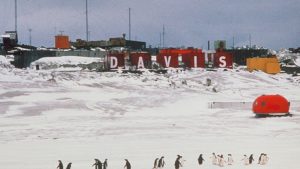 k the event. The Base was named after Antarctic legend, John King Davis, captain of the ships Aurora (1911–14) and Discovery (1929–31). used by Douglas Mawson on his expeditions.
k the event. The Base was named after Antarctic legend, John King Davis, captain of the ships Aurora (1911–14) and Discovery (1929–31). used by Douglas Mawson on his expeditions.
In January 1965, Davis was temporarily closed to concentrate resources on building Casey Station (WAP AUS-Ø2).
Davis was reopened on the 15th February, 1969 and has operated continuously since.
TNX VK5HZ/VKØHZ
VP8WA, Mr. Peter Short is SK
Written by Anthony W.DePrato WA4JQS
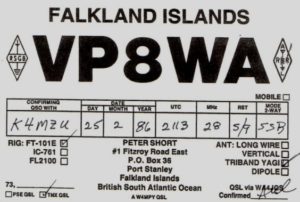 With sincere regret, we learn that Mr. Peter Short VP8WA of Port
With sincere regret, we learn that Mr. Peter Short VP8WA of Port Stanley, Falkland Islands, became a SK 2 weeks ago.
Stanley, Falkland Islands, became a SK 2 weeks ago.
Peter was a member of the South Sandwich Island DX Group. Peter was very hard working helping with our 1992 #1 Most Wanted DXPED VP8SSI and again in 1994 with our #1 most wanted DXPED 3YØPI to Peter the First Island.
Peter also helped later dxped’s going to South Sandwich ,South Georgia, and Peter 1st. He was the first and only RTTY QSO for many hams from the Falklands. Peter along with Marshall VP8PU and his XYL Dee VP8QG were for many during the 70’s, 80’s and 90’s the only VP8 QSO’s.
Sadly they are all now QRT for the most part. Bob VP8LP who also helped with all the SSI-DXG and later dxped’s is now the only active Ham in Stanley for the most part.
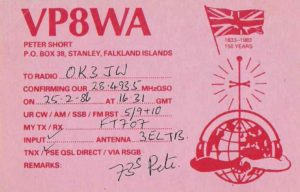 I was the QSL manager for all, but Bob VP8PL and still have the logsfor the following VP8’s: VP8PU, VP8QG, VP8WA, VP8ZV, VP8NJ, VP8QJ and VP8BZL.
I was the QSL manager for all, but Bob VP8PL and still have the logsfor the following VP8’s: VP8PU, VP8QG, VP8WA, VP8ZV, VP8NJ, VP8QJ and VP8BZL.
Tony WA4JQS / VP8BLZ, Anthony W.DePrato WA4JQS since 1962
Cq Dx Hall Of Fame # 35, Dxcc Honor Roll, Dxpedition Of The Year 1992 VP8SSI. Dxpedition Of The Year 1993/1994 3YØPI.
Calls held: VP8SSI, 3YØP,I VP8BZL, V31SS, ZD8JQS, WA4JQS/ZS1, WA4JQS/KC4, WA4JQS/4K1
TNX WA4JQS / VP8BLZ & Maxi, DL-SWL
Earthquake Strikes South Shetland Islands
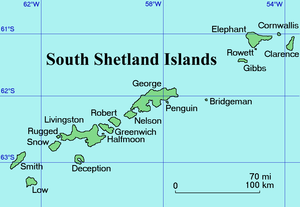 Monday 27 Aug at 20:09:24 a moderate magnitude earthquake at a depth of 64.0 km in open waters did strike the South Shetland Islands, Antarctica. Epicenter latitude/longitude was 61.85° South, 58.5° West
Monday 27 Aug at 20:09:24 a moderate magnitude earthquake at a depth of 64.0 km in open waters did strike the South Shetland Islands, Antarctica. Epicenter latitude/longitude was 61.85° South, 58.5° West
The earthquake was felt also at the Korean King Sejong Station (WAP KOR-Ø1) and in the Chilean Antarctic Base Pres. Eduardo Frei Montalva-Villa Las Estrellas (WAP CHL-Ø5), 54 km SW from epicenter.
Comment from the personnel overwintering at Arctowsky Polish Antarctic Station (WAP POL-Ø1) was: today between wind gusts we felt something new; – an earthquake measuring 5.6 on the Richter scale-.
Details at: https://www.earthquaketrack.com/r/soth-shetland-isl…/recent
Antarctic community mourns loss of science leader
 The Australian Antarctic Division has paid tribute to a former Chief Scientist, Professor Patrick (Pat) Quilty AM, who died on Sunday (26 August). Professor Quilty led the Division’s science program for more than 18 years from 1980–1999 and published more than 200 scientific papers.
The Australian Antarctic Division has paid tribute to a former Chief Scientist, Professor Patrick (Pat) Quilty AM, who died on Sunday (26 August). Professor Quilty led the Division’s science program for more than 18 years from 1980–1999 and published more than 200 scientific papers.
The Australian Antarctic Division said long-serving former chief scientisProfessor Quilty died at the weekend at the age of 79.

After graduating in 1962 with a Bachelor of Science with honors from the University of Western Australia, Professor Quilty first visited Antarctica in 1965 as a field palaeontologist with the University of Wisconsin.
He received his PhD from the University of Tasmania in 1969.
AAD director Nick Gales said Professor Quilty had made an outstanding  contribution to Antarctic science.
contribution to Antarctic science.
WAP sends personal heartfelt sympathies on the loss of Prof Pat Quilty to his family and to the whole AAD.
Global warming, a matter to be worried about!
 Thanks to our HAM friend Juan Manuel Pereda LU4CJM, this post reflects the worries that rise to world level!
Thanks to our HAM friend Juan Manuel Pereda LU4CJM, this post reflects the worries that rise to world level!
What we can do, is to share this and hope that something can change before it’s really too late.
Approximately 54 billion tons of greenhouse gases are emitted each year, mainly from the burning of fossil fuels.
The UN believes that these emissions should be reduced to 42 billion tons by 2030 to curb global warming below 2 degrees.
Women in science setting sail for Antarctica
Three University of Queensland researchers are among a group of 100 female scientists from around the world taking part in a 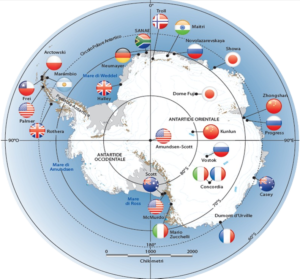 year-long leadership scheme culminating in an Antarctic voyage.
year-long leadership scheme culminating in an Antarctic voyage.
They are part of the fourth group selected for the prestigious Homeward Bound program, which aims to create a global network of women in science who can influence policy and decision making.
The Institute for Molecular Bioscience’s Dr Anna Vinkhuyzen and Hana Starobova and Dr Emma Kennedy from the Global Change Institute have teamed up with fellow Queenslanders, Bianca Das and Karen Aitken from CSIRO, to raise funds for the trip.
A three-week trip to Antarctica is the summit of a year-long journey, where the participants explore leadership, strategy, and how to extend the reach of their science message through virtual meetings and an online curriculum. The Queensland scientists will work and learn with colleagues from across the globe, despite their diverse research interests.
The fourth ship sails from Ushuaia, Argentina on 19 November 2019 and will visit several different research stations in Antarctica.
Read more at: https://www.uq.edu.au/news/article/2018/08/women-science-setting-sail-antarctica
Bellingshausen Station (WAP RUS-Ø1) – Rainbow above the Trinity Church
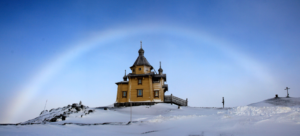 Spring is coming in Antarctica; rainbow above Holy Trinity Church at Bellingshausen Station (WAP RUS-Ø1), King George Island; world’s southernmost Russian Orthodox church.
Spring is coming in Antarctica; rainbow above Holy Trinity Church at Bellingshausen Station (WAP RUS-Ø1), King George Island; world’s southernmost Russian Orthodox church.
Correction from Wessex Weather: it’s probably not a rainbow because it doesn’t appear to be raining; more likely a fogbow or cloudbow (some navigators call them white rainbows).
Photo: Vitaly Boldin, AARI
Thanks and credit: https://www.facebook.com/TheAntarcticReport/photos/a.906628919420995/1756443784439500/?type=3&theater
San Diego Scientists to use drones in Antarctica Research
 National Oceanic and Atmospheric Administration scientists have tracked krill populations in the southern oceans for years, but for the first time, they plan to use autonomous computer-driven drones to help with the basic research.
National Oceanic and Atmospheric Administration scientists have tracked krill populations in the southern oceans for years, but for the first time, they plan to use autonomous computer-driven drones to help with the basic research.
Krill are tiny crustaceans that are a key building block of the food web in the southern oceans. The shrimp-like creatures feed whales, seals, penguins and people. The tiny animals are known for their large underwater swarms.
NOAA scientists have tracked fluctuating krill populations for years as part of an international effort to better understand the food web in the Antarctic.
Click on the gif aside to see an interesting video of this project.
“We study krill so we understand whether its trends and abundance are likely to be influenced by how much fishing effort we do, but also whether that fishing effort will impact the upper trophic levels like penguins and seals,” said Christian Reiss, a senior researcher at the Southwest Fisheries Science Center in La Jolla.
But packing up a research vessel and traveling to the bottom of the world takes time and money. Both are in short supply at a federal agency that is keeping a close eye on shrinking budgets.
Thanks and credit to: https://www.kpbs.org/news/2018/aug/16/san-diego-scientists-use-drones-antarctica-researc/ where you can get more
Italy – A day of National mourning
 WAP joins the day of National mourning for the victims of the collapse of the Morandi highway bridge in Genoa.
WAP joins the day of National mourning for the victims of the collapse of the Morandi highway bridge in Genoa.
Inaugurated in 1967, the Morandi viaduct served as the main East-West artery linking Genova and the entire southern Mediterranean. It was a key logistics point for trucks loading and unloading containers in Italy’s biggest gateway port, as well as the heavy car traffic towards different higways.
On 11:36 Tuesday morning, August 14th, the towering concrete icon of national pride collapsed into a jagged heap, swallowing carloads of innocent passersby, crushing the dreams of dozens of families leaving the whole country upset
Our sympathy and our deepest condolences to the families of the victims.
Fossil Bluff Field Station, Alexander Island, Antarctica – WAP GBR-1Ø
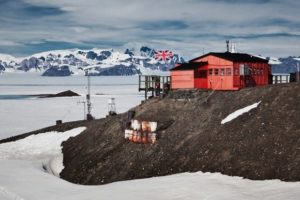 Fossil Bluff lies at the foot of a scree-covered ridge overlooking George VI Sound, which separates mountainous Alexander Island from Palmer Land.This small base located at 71° 20′ South, 68° 17′ West, was established on Alexander Island in 1961 with the purpose of Survey, geology, glaciology and field geophysics. This advanced station, occupied during the winters of 1961, 1962, 1969-75, supplied overland for field parties from Stonington Island (Station E) WAP GBR-Ø5, Adelaide (Station T) WAP GBR-13, and Rothera (Station R) WAP GBR-12. It was closed for the 1976 winter when Rothera (Station R) became fully operational, and now is a forward logistics facility with skiway
Fossil Bluff lies at the foot of a scree-covered ridge overlooking George VI Sound, which separates mountainous Alexander Island from Palmer Land.This small base located at 71° 20′ South, 68° 17′ West, was established on Alexander Island in 1961 with the purpose of Survey, geology, glaciology and field geophysics. This advanced station, occupied during the winters of 1961, 1962, 1969-75, supplied overland for field parties from Stonington Island (Station E) WAP GBR-Ø5, Adelaide (Station T) WAP GBR-13, and Rothera (Station R) WAP GBR-12. It was closed for the 1976 winter when Rothera (Station R) became fully operational, and now is a forward logistics facility with skiway
Fossil Bluff it is about 225 miles south of Rothera, with summer-only occupation since 1975, the bluff is a collection of 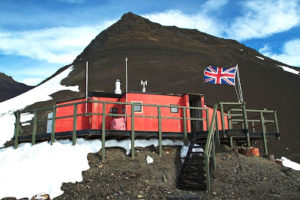 buildings and facilities, at the centre of which lies the main hut, named Bluebell Cottage, houses four people in comfort and forms a transit station for summer field parties
buildings and facilities, at the centre of which lies the main hut, named Bluebell Cottage, houses four people in comfort and forms a transit station for summer field parties
The base is operated by Twin Otters from Rothera station (90 to 110 minutes flight) during the Antarctic summer season as forward fuel depot, facility for re-fuelling aircraft and field station for parties from Rothera (Station R) during austral summers. Site was cleaned-up by BAS during the 2002/03 and 2003/04 seasons.
A 1,200 metres unprepared snow runway (skiway) marked by drums is located 1km south of the station. During the Antarctic summer months a small team provides weather forecasting information for flight safety
Snipe Island, Chilean Navy outpost and Meteorological Station WAP CHL-NEW
 The Snipe island 54 ° 57′ South, 67 ° 9′ West was involved into a military incident that took place between Chile and Argentina during 1958 as a result of a disputed border line in the Beagle Channel for the possession of that islet.
The Snipe island 54 ° 57′ South, 67 ° 9′ West was involved into a military incident that took place between Chile and Argentina during 1958 as a result of a disputed border line in the Beagle Channel for the possession of that islet.
Snipe Island, located a mile from Navarino, is a small rocky formation with sparse vegetation that was occupied by an indigenous Yahgan from that island, authorized by Chile to graze sheep in it.
On January 12, 1958, the Micalvi cutter of the Chilean Navy, based in Punta Arenas, built a blind beacon on the Snipe island, on the Beagle Channel, as an aid to navigation and on May 1 of the same year, the Patrolman Lientur was commissioned to install a luminous beacon on its structure, giving the corresponding international warning to alert sailors to its existence.
The fate of Snipe islet has since been settled by the Treaty of Peace and Friendship of 1984, as an internationally recognized territory of the state of Chile.
There is now a lighthouse (WAP CHL-LH-NEW) on the islet. The Treaty of Peace and Friendship of 1984 between Chile and Argentina was signed into agreement at the Vatican on 29 November 1984.
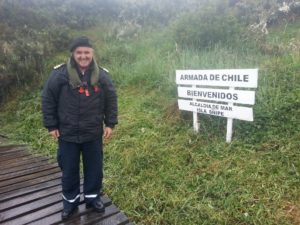 Actually, on this sub-Antarctic site there is a Navy outpost, a Meterological Station and a Lighthouse.
Actually, on this sub-Antarctic site there is a Navy outpost, a Meterological Station and a Lighthouse.
Who knows if one day, some willing Radio operator or one of the Chilean Radio Clubs will try to activate this rare DX spot … ee would be happy and proud to Log a DXpedition from Snipe Island!
Polar Challenge 2018 by the French Polar Team
 The 2018 results of Arctic Challenge , Antarctic Challenge , Polar Challenge ( Arctic Ch + Antarctic Ch ) are available online via :
The 2018 results of Arctic Challenge , Antarctic Challenge , Polar Challenge ( Arctic Ch + Antarctic Ch ) are available online via :
http://french-polar-team.fr/Polar_Trophy_files/Polar%20Trophy%20Scores.pdf , where the full list can be seen
About Antarctic Challenge the 1st 20 Hams on the 2018 list are:
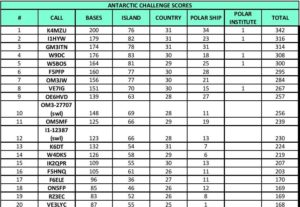
The French Polar Team’s website (http://french-polar-team.fr ) is dedicated to amateur radios and Short Waves Listeners (SWL) fascinated by Polar and Sub-Antarctic Rregions.
Mehdi F5PFP and Michel F6DWQ have created the Polar Trophy in the aim![]() to stimulate the radio contacts with these regions as well as with the Polar ships. This challenge is subdivided in the Antarctic Challenge and the Arctic Challenge.
to stimulate the radio contacts with these regions as well as with the Polar ships. This challenge is subdivided in the Antarctic Challenge and the Arctic Challenge.
TNX Michel F6DWQ & Mehdi F5PFP for the great job!
3G9JA Hornos Island, WAP CHL-2Ø
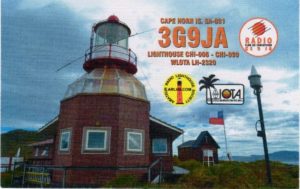 Just to resume the article of last August 1st (the 2016 operation from Hornos Island WAP CHL-2Ø), we are happy to show the QSL of 3G9JA just received by Bob K4MZU, who said: –Good news….very happy today I received QSL confirmation from Dagoberto CE5COX for 3G9JA-.
Just to resume the article of last August 1st (the 2016 operation from Hornos Island WAP CHL-2Ø), we are happy to show the QSL of 3G9JA just received by Bob K4MZU, who said: –Good news….very happy today I received QSL confirmation from Dagoberto CE5COX for 3G9JA-.
Another rare one to add to the WAP QSL Gallery.
It ‘s getting hard to work new sites in Antarctica or Sub/Peri-Antarctic areas but for time to time something new is coming on the air, and let’s say, those are real DX!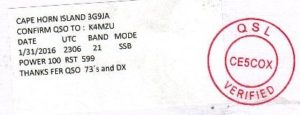
TNX Bob Hines KI4MZU
Today on all Australian Antarctic Stations flags are flying at half mast
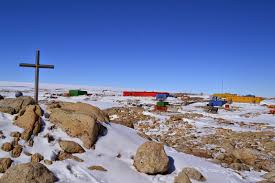 Today on all Australian Stations flags are flying at half mast in honour of Geoffrey Reeve who passed away at Casey in 1979. ( pic aside shows Casey Cross at Reeve’s Hill)
Today on all Australian Stations flags are flying at half mast in honour of Geoffrey Reeve who passed away at Casey in 1979. ( pic aside shows Casey Cross at Reeve’s Hill)
Geoffrey Basil Reeve, was the first Casey expeditioner to die while serving in Antarctica; he died of exposure and hypothermia in 1979 during a blizzard.
August 1979 at Casey Base, Antarctica: Geoffrey Reeve died of exposure after he became lost in a blizzard 10km from Casey. He was the senior electrical fitter-mechanic at the station, and deputy officer-in-charge. Early in August Mr Reeve was one of six members of the winter party who camped at Robinson Ridge, a rock out-crop about 10km from Casey, to undertake maintenance and biological observations. On August 5 he was moving in the camp precincts when he was caught in a sudden blizzard which reached a speed of 96 knots. Other members of the party found Geoffrey Reeve unconscious less than a kilometre from the camp. A search and rescue team, including the medical officer, Dr K. de Jonge, was sent from Casey by tractor, and brought Mr Reeve back to the station. Further resuscitation attempts were unsuccessful. Mr Reeve’s family asked that his body be returned to Australia for burial. It will be flown out from Casey on one of the two flights which a United States Navy Hercules will make from McMurdo Station in the first week of November.
Source: https://antarcticsociety.org.nz/wp-content/uploads/2017/07/Antarctic.V8.11.1979.pdf
The Jesuits and their important presence in Antarctica
In spite of the famous saying “below 40 degrees South there is no law; below 50 degrees South there is no God” the exploration of the continent was in fact closely connected to religious activities Jesuit geophysicists. Some of the early religious buildings are now protected as important historical monuments. Antarctica has various places of worship and an increasing demand for religious services and construction of sacred architecture on the Continent
 Jesuit is the largest single order in the Catholic church, with more than 19,000 members by its own count, and a presence on every continent including Antarctica, where Jesuits have been chaplains and, in keeping with their order’s reputation as the church’s intellectual powerhouse, even scientists. Jesuits have a 60 year history in Antarctica. In 1951 a 27 year-old French Jesuit scholastic (seminarian) and here below are some of them:
Jesuit is the largest single order in the Catholic church, with more than 19,000 members by its own count, and a presence on every continent including Antarctica, where Jesuits have been chaplains and, in keeping with their order’s reputation as the church’s intellectual powerhouse, even scientists. Jesuits have a 60 year history in Antarctica. In 1951 a 27 year-old French Jesuit scholastic (seminarian) and here below are some of them:
Rev. Pierre-Noël Mayaud (1923-2006), was one of 17 scientists who sailed on the polar exploration ship Commandant Charcot to spend 12 months at Adelie land, the French sector of Antarctica. Mayaud had become a Jesuit in 1941 at the age of 18. Permission for him to join the Antarctic expedition was given by Fr. Jean-Baptiste Janssens, who was at that time the Superior General of the Society of Jesus, because it was believed that the experience he gained in Antarctica and the scientific work he did there would be a great asset in his future work as a professor at a Catholic university. Later in his life Father Mayaud, a geophysicist, was member of Conseil National de la Recherche Scientifique (CNRS). See: https://antarcticjesuit.com/2013/01/04/french-jesuit-in-antarctica/
The Rev. Edward C. Bradley (* 18 july 1928, +8 june 2011, aged 82), was a Philadelphia physician who became a Jesuit priest when he was 50 In June 1979, the month before his 51st birthday, he was ordained as a Jesuit priest. for 18 years, Bradley had been one of the University’s most ambitious and adventurous Jesuit scientists, operating a state-of-the-art seismology station and challe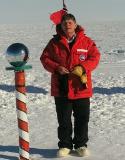 nging students in the classroom, all the while regaling everyone with stories of his adventures—particularly of his trip to Antarctica and his explorations at the bottom of the world
nging students in the classroom, all the while regaling everyone with stories of his adventures—particularly of his trip to Antarctica and his explorations at the bottom of the world
Father Michael Smith Australian Jesuit, visited the South Pole in December 2012 when he was a chaplain to the US base in the Antarctic (pic aside).
Father Dan Doyle (1932-2014) has been the leader of New Zealand’s Antarctic Ministry for the past 15 years, spending 14 summers at the Antarctic base as priest to a maximum summertime population of 2,000. In the winter, when the Antarctic falls dark, the population drops to about 150 essential staff.
Horn Island Meteo Station WAP CHL-2Ø
 Located at 55° 56’ 50” South, 67° 18’ 15” West, Horn Island Meteo Station did enter the WAP-WADA Directory as WAP CHL-2Ø, following the operation of 3G9JA operated in February 2016 (see http://www.ce5ja.cl/expedicion-cabo-de-hornos/ ) The original preview callign XR400JA have been changed to 3G9JA operated by Dagoberto, CE5COX who was QRV 40-20-10m, SSB/RTTY. QSL via CE5JA.
Located at 55° 56’ 50” South, 67° 18’ 15” West, Horn Island Meteo Station did enter the WAP-WADA Directory as WAP CHL-2Ø, following the operation of 3G9JA operated in February 2016 (see http://www.ce5ja.cl/expedicion-cabo-de-hornos/ ) The original preview callign XR400JA have been changed to 3G9JA operated by Dagoberto, CE5COX who was QRV 40-20-10m, SSB/RTTY. QSL via CE5JA.
That one, was a Special activation for the “Anniversary of the Discovery of Cape Horn (1616-2016)
The Chilean Navy maintains a station on the island, consisting of a residence, utility building, chapel, and lighthouse. A short distance from the main station is a memorial, including a large sculpture featuring the silhouette of an albatros, in honor of the sailors who died while attempting to “round the Horn”.
The island is one of the Hermite Islands, part of the Tierra del Fuego archipelago. Two lighthouses are located near or in Cape Horn. The one located in the Chilean Navy Station is the more accessible and visited, and is commonly referred to as the Cape Horn lighthouse. However, the Chilean Navy station, including the lighthouse (ARLS CHI-030, 55° 57’ 48” South, 67° 13’ 12” West) and the memorial, are not located on Cape Horn (which is difficult to access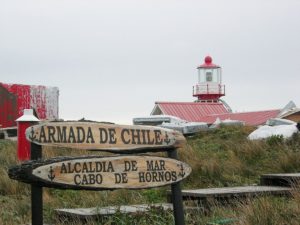 either by land or sea), but on another land point about one mile east-northeast.
either by land or sea), but on another land point about one mile east-northeast.
![]() A video show some very interesting views of this Island is available by clicking the red button aside.
A video show some very interesting views of this Island is available by clicking the red button aside.
Before it was a detachment of three Chileans who are part of the Chilean Navy, those who took care of the facilities and gave sovereignty to this mythical point of the world navigation. Now who is in charge of the lighthouse and the weather station is a single military man, who must reside on the island for a year with his family. The island of Hornos can only be reached by private boat, with the Chilean navy or in one of the two cruises that make the route of the Patagonian channels or that travel towards Antarctica.
Let’s hope the Chilean Radio Club or some Chilean operators can do it again in the near future, Horn Island is always a great DX!
RI1ANW Novolazarevskaya Station, WAP RUS-Ø9
Alex RN1ON informs that Sergey V. 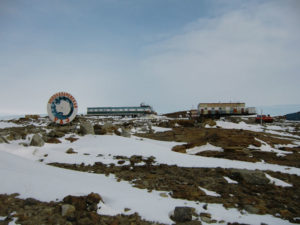 Timofeyev, R3IW will be active on HF Bands mostly on Digi modes as RI1ANW from Novolazarevskaya Station (WAP RUS-Ø9), Antarctica, until March 2019 together with RI1ANL (operated by RW6ACM).
Timofeyev, R3IW will be active on HF Bands mostly on Digi modes as RI1ANW from Novolazarevskaya Station (WAP RUS-Ø9), Antarctica, until March 2019 together with RI1ANL (operated by RW6ACM).
Alex says that Sergey, R3IW (ex.call-sign RW3IW) was not very active, so there is no information of his new callsign on QRZ.com. Sergey’s callsign RI1ANW for Novolazarevskaya was just issued on last July 23.
Please note that at the beginning of 2018, Sergey R3IW made 30-40 QSOs signing RI1ANF operating from Novolazarevskaya Station,  Antarctica (not from Bellingshausen Base WAP RUS-Ø1), so make sure to eventually allocate RI1ANF (2018) to Novolazarevskaya not to Bellingshausen.
Antarctica (not from Bellingshausen Base WAP RUS-Ø1), so make sure to eventually allocate RI1ANF (2018) to Novolazarevskaya not to Bellingshausen.
QSLs for both callsigns RI1ANL and RI1ANW and few of those QSOs as RI1ANF (2018) must be requested only to RN1ON, ClubLog OQRS.
Direct requests via RN1ON:
Alexei V. Kuz’menko, P.O. Box 599, 163000, Arkhangelsk, Russia
TNX Alex RN1ON
